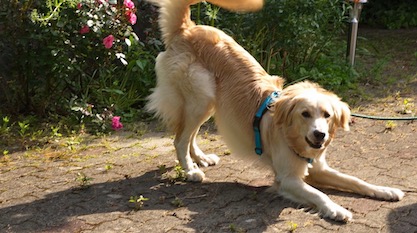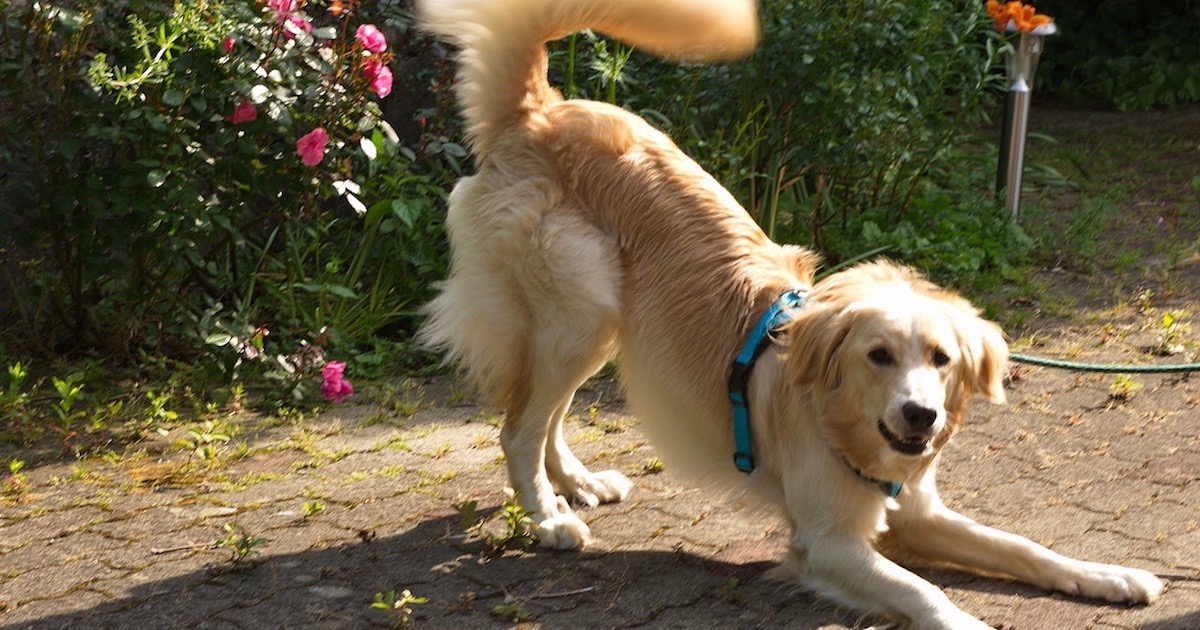 Evolution
Evolution
This Is Science — Dog Study Confirms What Everyone Already Knew


Every time an ID critic tells you intelligent design isn’t science, you could point to something like this in response. It’s undoubtedly peer-reviewed science, published in the journal Animal Cognition, by two scientists from the University of Salford’s School of Environment & Life Sciences in the U.K. In their article, hot off the presses, they discuss “Cross-species referential signalling events in domestic dogs (Canis familiaris).”
The conclusion? Dogs use a range of gestures to signal their desires to their owners.
Is this so obvious as to be stupefying? You bet. The Abstract:
Referential gestures are used by a signaller to draw a recipient’s attention to a specific object, individual or event in the environment. These gestures have received much research attention in relation to human and non-human primates with great apes being shown to possess impressive gestural repertoires. Domestic dogs (Canis familiaris) meanwhile provide an ideal non-primate candidate for investigating referential signalling due to their unique relationship with humans that centres on non-verbal communication with frequent interaction. Here we observed 37 pet dogs in their own homes. Owners recorded 242 videos containing 47 potential referential gesture events. We analysed those recordings to reveal evidence of 19 referential gestures performed by domestic dogs during everyday communicative bouts with humans, showing that the gestures conform to the five features of referential signalling. Our study exposes impressive gesturing abilities in a non-primate mammal; especially when viewed in the context of the cross-species rather than intraspecific communication.
They report with a solemnity that could be mistaken for parody but that I’m sure is not meant that way: “The four ASOs [apparent satisfactory outcomes] with the highest observational frequency were ‘Scratch me!’, ‘Give me food/drink’, ‘Open the door’ and ‘Get my toy/bone’, resulting in 242 bouts of communication.” Table 3 summarizes the results which include the revelations that “Head turn” mostly means “Give me food/drink” while it can also mean “Open the door” or less frequently, “Get my toy/bone” or “Scratch me!” “Hind leg stand” usually means “Give me food/drink” while “Roll over” has the exclusive meaning of “Scratch me!”
“Strong Evidence” for the Obvious
They conclude, “This study provides strong evidence that pet dogs use referential gestures during everyday communicative bouts with humans.” Dogs are famous for being communicative and a child can easily work out the meaning of their gestures given an hour or two of experimentation.
The authors note that their “research received no specific grant from any funding agency,” which is kind of a relief. Yet it’s sobering to consider the time and energy that went into documenting something that anyone could tell you after an afternoon observing animals and their people interacting in an off-leash dog enclosure.
I don’t mean to rain on the parade of authors Hannah K. Worsley and Sean J. O’Hara who, at a guess, are dog aficionados and worked hard on their article with its many citations of other research, its “Statistical analyses,” “Supplementary material,” and assurance of “Ethical approval.” They obtained a green light from the Association for the Study of Animal Behaviour ethics panel. The work, meanwhile, is garnering equally excited-sounding and misleading media headlines.
- “Do you speak dog? Scientists reveal the NINETEEN gestures our four-legged friends use to communicate” (Daily Mail)
- “These are the 19 ways your dog is secretly communicating with you” (Fox News)
- “Dogs vs. Cats: Scientists finally reveal which is smarter” (New York Post)
But of course dogs do not speak, and their gestures are in no way secret. If they were secret, in the sense of being previously unknown to humans, what would be the point?
What, then, is the takeaway? It might be that both scientists and reporters have a professional imperative to fill space. Toward that end, almost anything will do. And they work together symbiotically. This is “science” and “science reporting” for you.
The Best for Last
Well, there is an interesting observation pertinent to evolution.
The inference from great ape studies is that the increased ‘intelligence’ in their subjects is due to phylogeny and a shared ancestry with humans (Hobaiter and Byrne 2011). In contrast dogs last shared a common ancestor with primates 100 mya yet this study suggests they possess impressive skills in this domain.
In other words, in contrast with apes, it’s a tougher sell to say that dogs share an ability to communicate with us because of being close evolutionary cousins. This, the most telling point in the paper, is saved for the very last sentence.
Photo credit: Thomas Zimmermann (THWZ) [CC BY-SA 3.0 de], from Wikimedia Commons.
H/t: Denyse O’Leary.
